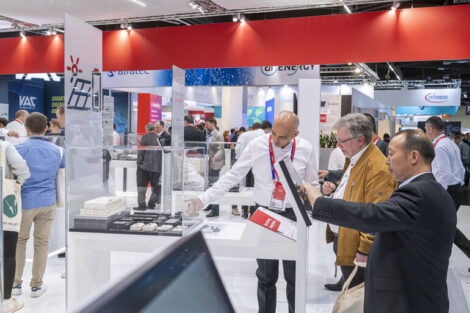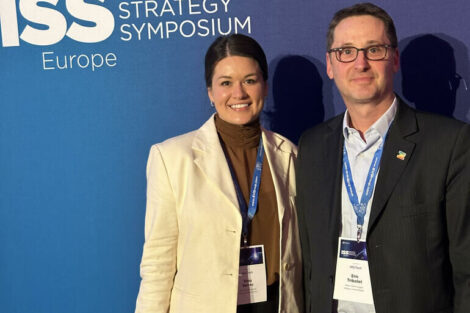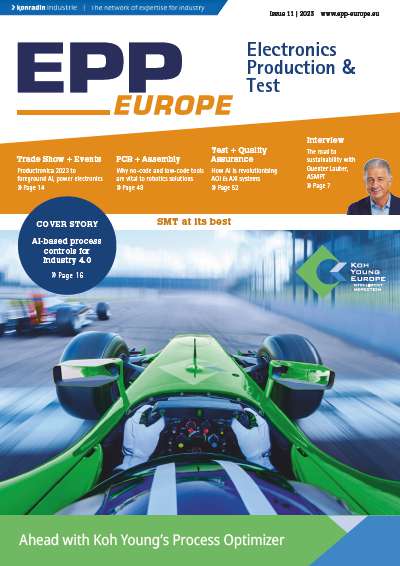The Siplace team called, and more than 450 decision-makers from electronics manufacturers and EMS providers from all over the world accepted the invitation and attended the Siplace Convention in Munich/Germany. During the three-day event, Siemens Electronics Assembly Systems (EA) presented new products and services in workshops, forums and panel discussions. According to the SMT experts there are a number of good reasons for the rapidly rising demand for consulting and other services: most SMT assembly facilities still continue to carry loads of hidden potential for productivity improvements. But how does this kind of “tuning” actually work?”
The objective of the event was to strengthen and further expand the innovation network consisting of Siplace experts, leading electronics manufacturers and other service and application partners. Over three days, more than 450 convention visitors learned about, discussed and analyzed the current and the probably future challenges in electronics assembly in the form of presentations, workshops and panel discussions. On the product side, Siplace presented plenty of innovations to its guests. A special highlight was the world premiere of the Siplace CPP MultiStar head. CPP stands for collect & pick & place and describes the unique ability of the head to combine the previous separate placement modes collect & place, as well as pick & place in an efficiently operating single piece of equipment.
A twofold head
With its high performance, versatility and speed, the new 12-nozzle CPP head delivers a placement performance of approximately 24,000 cph, and its component spectrum ranges from 01005-chips to components with large dimensions of up to 50 mm x 40 mm. On the line it can be operated not only as a C&P or P&P head, but also in a mixed mode, which is why the head can be equally deployed in high-speed applications and end-of-line processes. This is a previously unknown level of flexibility that ensures that even assembly lines with frequently changing products (many changeover procedures) can be balanced optimally under all circumstances. Another option providing for higher productivity and flexibility is the Siplace Quad Lane. With this four-lane conveyor system, manufacturers can assemble the same electronics board or up to four different products simultaneously on a single line. The Quad Lane opens the door to innovative production and logistics concepts for electronics manufacturers. And it does it all without compromising flexibility, because the line can be converted back to triple, dual or single lane operation within seconds.
Services gaining in importance
The manufacturers and EMS providers were especially interested in the various workshops during the event. This reflects a major trend in the industry as consulting and other services are intensely gaining in importance. “The rapid expansion of our service portfolio is a response to the rising demand. This is also a special feature of the Siplace Convention, because unlike at traditional trade shows we can take this opportunity to provide much more detailed information and insights into projects and individual service offerings”, explains Florian Bauer, head of global Siplace services. “Today’s services no longer focus exclusively on reactive services like spare parts deliveries or pure ‘fix and repair’. Rather, they concentrate on proactive optimization improvements that go far beyond the individual line, such as logistics, material flows or special processes like setup changeovers, NPI (new product introduction) or just-in-time concerns. With our performance services we aim for a comprehensive “tuning” of the customers’ electronics production.”
The Siplace manufacturing experts take advantage not only of their long-term experience from many different SMT assembly sites all over the world; they also look at the big picture by analyzing the production and supply chain concepts used in other industries. In workshops and with the help of a real example, the visitors were educated and therefore able to learn what advantages can be achieved with good advice and state-of-the-art analytical and optimization methods. The model project being presented was the Siemens electronics manufacturing plant EM A in Amberg, Germany. Even when its design is completely unconventional – instead of focusing on individual lines or a product (which would most likely change after a few weeks) – the staff on the Amberg shop floor strive to turn their entire factory with its six lines into a high-mix/low-volume assembly facility.
Value stream mapping analyzes processes
In order to analyze the flows of material and information of the production processes at EM A in Amberg, value stream mapping was used. This useful tool points out the potential bottlenecks and indicates which processes should be synchronized better, and where key performance indicator monitoring would be advisable. Based on the results of this in-depth analysis, the engineers identify efficiency gaps and potentials and recommend suitable improvement measures.
At the shop floor, for example, the setup changeover process on the SMT lines was not as efficient as it could be. The value stream mapping indicated that sustainable improvements in this area would have a significant impact on the overall performance of the assembly site. The manufacturing specialists developed ways to reduce the changeover times in a series of individual workshops. Together with Siplace, the plant conducted training seminars, implemented new tools and systematically improved its planning and scheduling procedures. “A continued optimisation and focussing on customer requirements will be the decisive factor for the future of SMT placement in Germany and Europe”, Norbert Keil, head of Process Engineering, explains.
ABC analyses are another example of how to create fixed setups and line configurations. (ABC analysis are used to define an inventory categorization technique often used in materials management. It is a tool for identifying items which will have a significant impact on inventory cost while also providing a mechanism for identifying different categories of stock that will require different management and controls. Here, inventory items are valued and grouped typically into three categories, called ABC codes. A class inventory contains material that account for 80 % of total value, B class has around 15 % of total value, and C class accounts for the remaining 5 %.) From this, we can see among others which products are the fast sellers and which are the slow ones. And what is the best setup or manufacturing strategy for each? Many electronics manufacturers don’t make these differentiations and use the same standard model throughout the plant for all their products. In Amberg and at other customers’ sites the Siplace experts were able to generate significant efficiency improvements by introducing product-specific setup and manufacturing strategies.
Pull instead of push
One of the greatest efficiency killers in manufacturing companies is the time during which the products just “sit”. While the net time required to assemble a board is only a few minutes, the actual time the board spends somewhere in the production process or on the shop floor is often days or even weeks. The goal here is to provide the transition from a “stationary” production to a “fast-moving” manufacturing environments.
Maybe this sounds quite a bit abstract, but this move can be accomplished in practically all assembly sites with a wealth of small and useful changes. For example, proactive or preemptive maintenance concepts help to ensure trouble-free machine operation, smaller production lots accelerate the flow of materials, and Kanban solutions ensure a production process that’s much more demand-oriented than traditional push concepts. The Siemens model factory in Amberg, for instance, implemented a continuous Kanban chain from receiving to shipping. (Kanban – which means in Japanese billboard – is a signaling system to trigger action. As its name suggests, Kanban historically uses cards to signal the need for material to trigger a movement, production or supply of material in factories’ workflow.)
Placement performance has been doubled
The example of the Amberg site demonstrates how effective SMT process improvements can be. Only 18 months after the optimization project was started, the line placement performance has improved by 100 percent and the line utilization rate by 80 percent. The results of Siplace’s Performance Services were similarly impressive in many other projects.
The specialists identified sustainable improvement potentials for all customers and improved their productivity by 8 percent on average. And the return on investment will make any accountant very happy these days: for 80 percent of the customers, the improvement project with Siplace Performance Services paid for itself in only six months.
“In many areas, electronics manufacturing is highly automated. In many others, however, it lags behind other industries, particularly as far as the overarching process quality or planning and control transparency are concerned”, Florian Bauer is convinced. “Of course, we are happy that we could generate such impressive improvements for our customers. They also indicate, nevertheless, that there is still a lot of potential out there that we as a globally operating premium manufacturer can turn into real improvements with our Siplace Performance Services.”
The enormous interest in the service workshops and the subsequent discussions during the Siplace Conventions indicated that electronics manufacturers have recognized the need for optimization and improvement. The manufacturing equipment innovations continue to be important, but that cross-functional “tuning” of all production-relevant processes will become increasingly important over the coming years. Susanne Oswald (gbw)
EPP Europe 400
Share:













